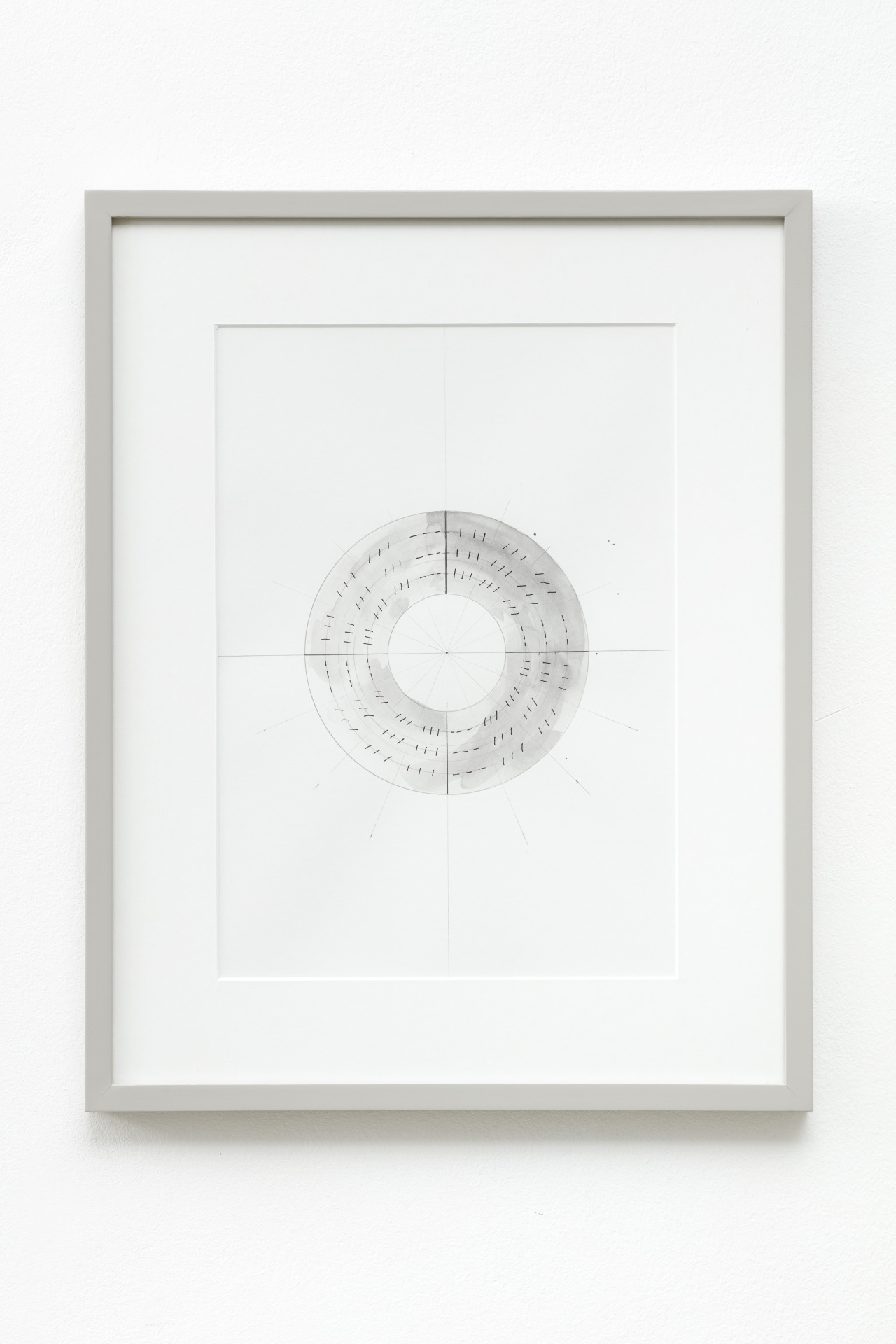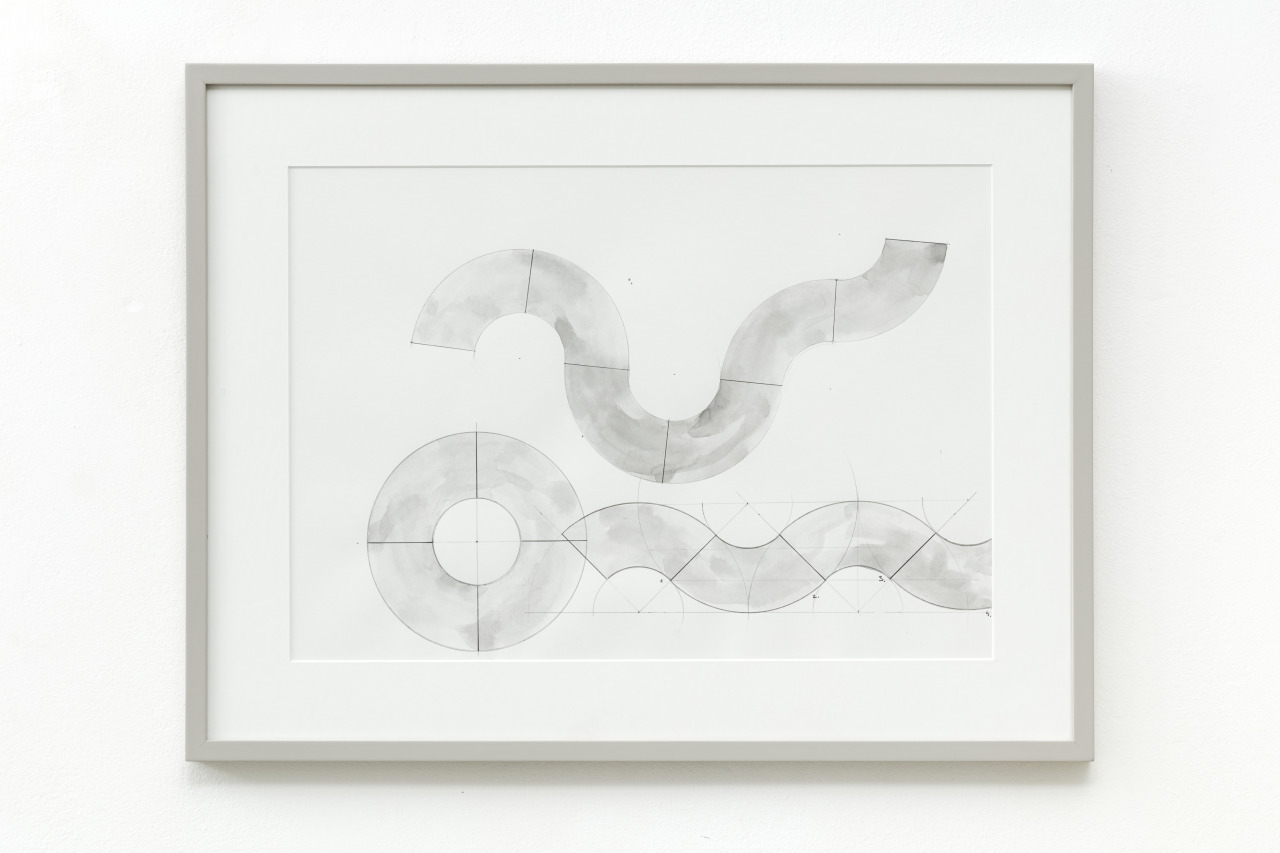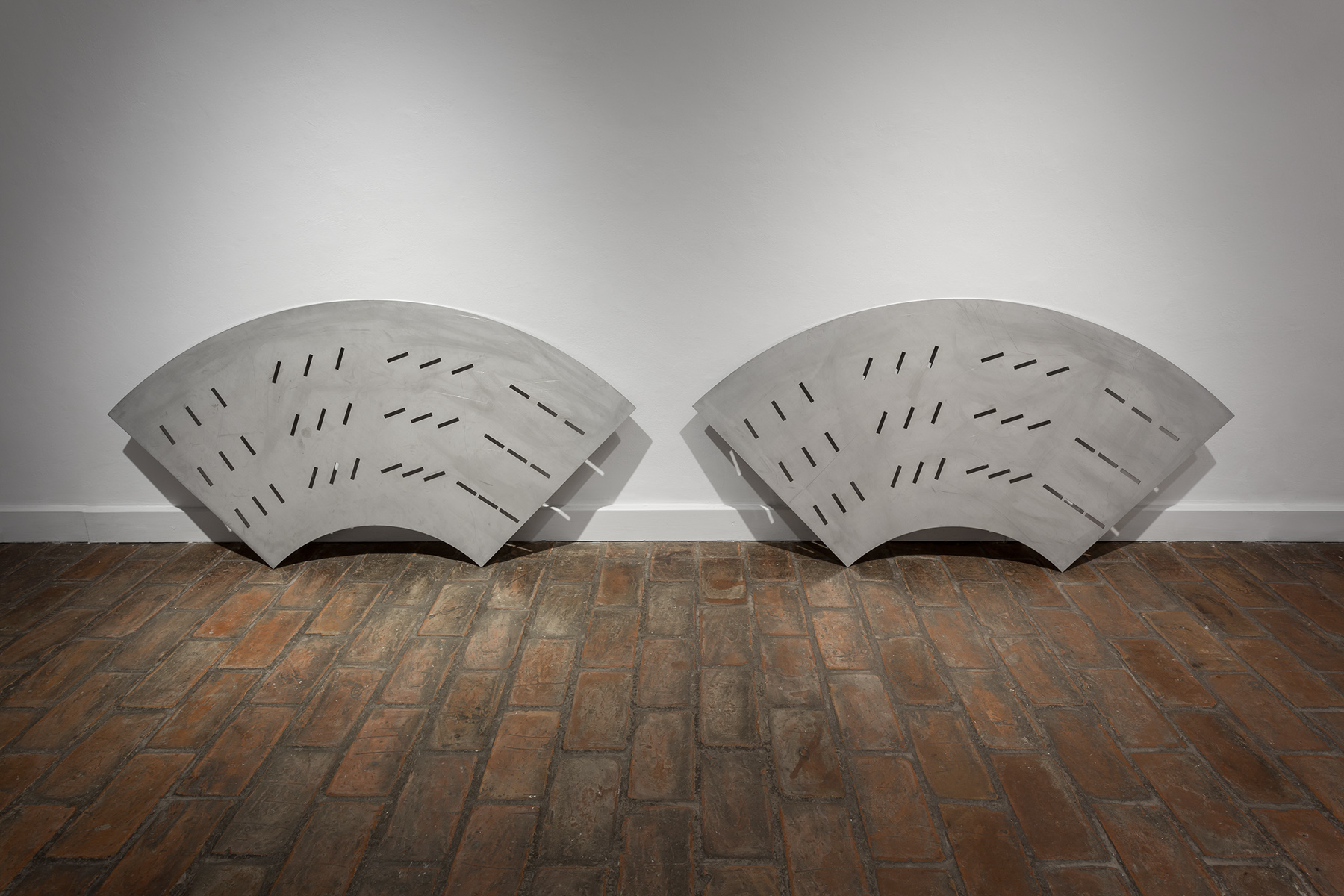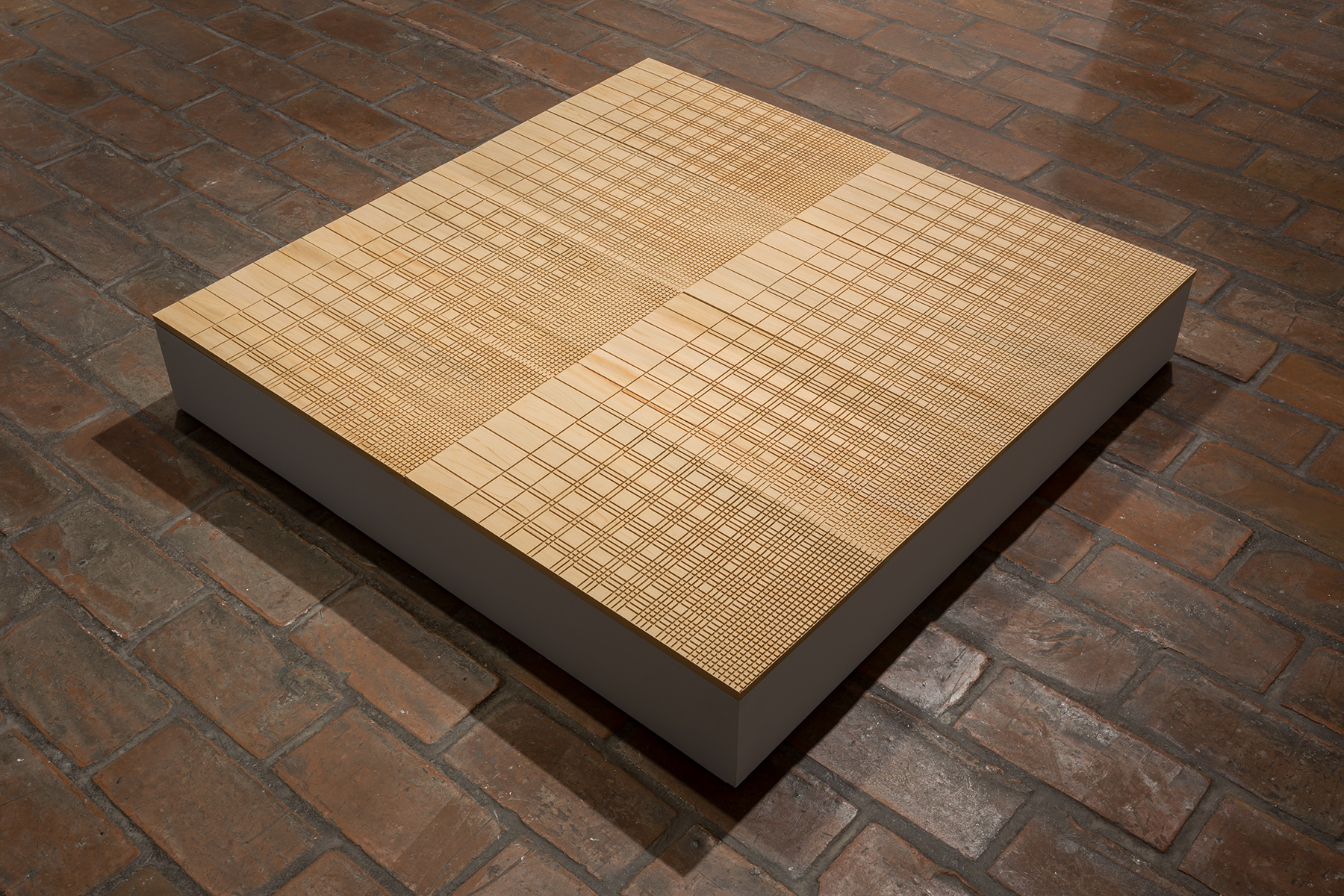Kisterem
Júlia Vécsei
„The distances we have travelled and the time that has passed are individual variables in the lives of every one of us. At every moment, we define ourselves by piecing together slivers of the experiences we have gained via these variables. Motion can be seen as a continuation of Vécsei’s earlier works entitled One Day (2018) and Fragment (2018), which likewise experimented with reducing the hands of a clock into a wavy, grid-like pattern. The stainless steel plates, pierced with notches and each forming a quarter circle, are the abstracted faces of clock towers. The groups of lines that run all the way across the sections refer to the separate phases of the clock hands, as a study of motion, but on the winding path before us, they can also be seen as traces that have been left behind, a unique code system. By showing us the measurable yet intangible nature of time, the lines, through their absence, become visible through the notches pierced into the surface of the plates. Thanks to their identical patterning, the quarter circles, aligned beside each other, can be interchanged at will, so that any of the forms depicted in the sketches can be composed with some or other rearrangement of the plates. Vécsei is concerned with the logic of existence: with the trinity of motion, time and perception. How many directions can we move in, and how many ways can we arrange our given units of time, in order to end up on a path that has the right rhythm?“
Lili Varga
Biography
Júlia Vécsei was born in 1976, she lives and works in Budapest and Vienna. Vécsei graduated at the Intermedia Department of the Hungarian University of Fine Arts in 2001. Since then, she has been working with various types of media. In the last 10 years she has been drawing on a regular basis, throughout several countries she travelled to and numerous residency programs she was involved. The different series of drawings are interrelated through a precisely refined, tension based minimalism, reconstituting the same visual elements. The starting points of the drawings are personal stories, life situations and lately even intimate approaches to broader, social issues.
Kisterem
Since its foundation in 2006, Kisterem represents both young artists at the beginning of their careers and established artists who often use different media to create their artworks, exceeding the comfort zone of commercial contemporary art galleries. Through its exhibitions and events, the gallery aims to facilitate encounters between artists, representatives of institutions, curators, and collectors, as well as visitors keen on contemporary art. Kisterem is committed to the representation of Hungarian art abroad, it participates regularly in prominent international art fairs and cooperates in unique projects. As a result of these, following the gallery’s exhibitions, several works of artists represented by Kisterem have been acquired by major museums.

Margit Valkó
0036309601015
Júlia Vécsei
„The distances we have travelled and the time that has passed are individual variables in the lives of every one of us. At every moment, we define ourselves by piecing together slivers of the experiences we have gained via these variables. Motion can be seen as a continuation of Vécsei’s earlier works entitled One Day (2018) and Fragment (2018), which likewise experimented with reducing the hands of a clock into a wavy, grid-like pattern. The stainless steel plates, pierced with notches and each forming a quarter circle, are the abstracted faces of clock towers. The groups of lines that run all the way across the sections refer to the separate phases of the clock hands, as a study of motion, but on the winding path before us, they can also be seen as traces that have been left behind, a unique code system. By showing us the measurable yet intangible nature of time, the lines, through their absence, become visible through the notches pierced into the surface of the plates. Thanks to their identical patterning, the quarter circles, aligned beside each other, can be interchanged at will, so that any of the forms depicted in the sketches can be composed with some or other rearrangement of the plates. Vécsei is concerned with the logic of existence: with the trinity of motion, time and perception. How many directions can we move in, and how many ways can we arrange our given units of time, in order to end up on a path that has the right rhythm?“
Lili Varga
Biography
Júlia Vécsei was born in 1976, she lives and works in Budapest and Vienna. Vécsei graduated at the Intermedia Department of the Hungarian University of Fine Arts in 2001. Since then, she has been working with various types of media. In the last 10 years she has been drawing on a regular basis, throughout several countries she travelled to and numerous residency programs she was involved. The different series of drawings are interrelated through a precisely refined, tension based minimalism, reconstituting the same visual elements. The starting points of the drawings are personal stories, life situations and lately even intimate approaches to broader, social issues.
Kisterem
Since its foundation in 2006, Kisterem represents both young artists at the beginning of their careers and established artists who often use different media to create their artworks, exceeding the comfort zone of commercial contemporary art galleries. Through its exhibitions and events, the gallery aims to facilitate encounters between artists, representatives of institutions, curators, and collectors, as well as visitors keen on contemporary art. Kisterem is committed to the representation of Hungarian art abroad, it participates regularly in prominent international art fairs and cooperates in unique projects. As a result of these, following the gallery’s exhibitions, several works of artists represented by Kisterem have been acquired by major museums.




